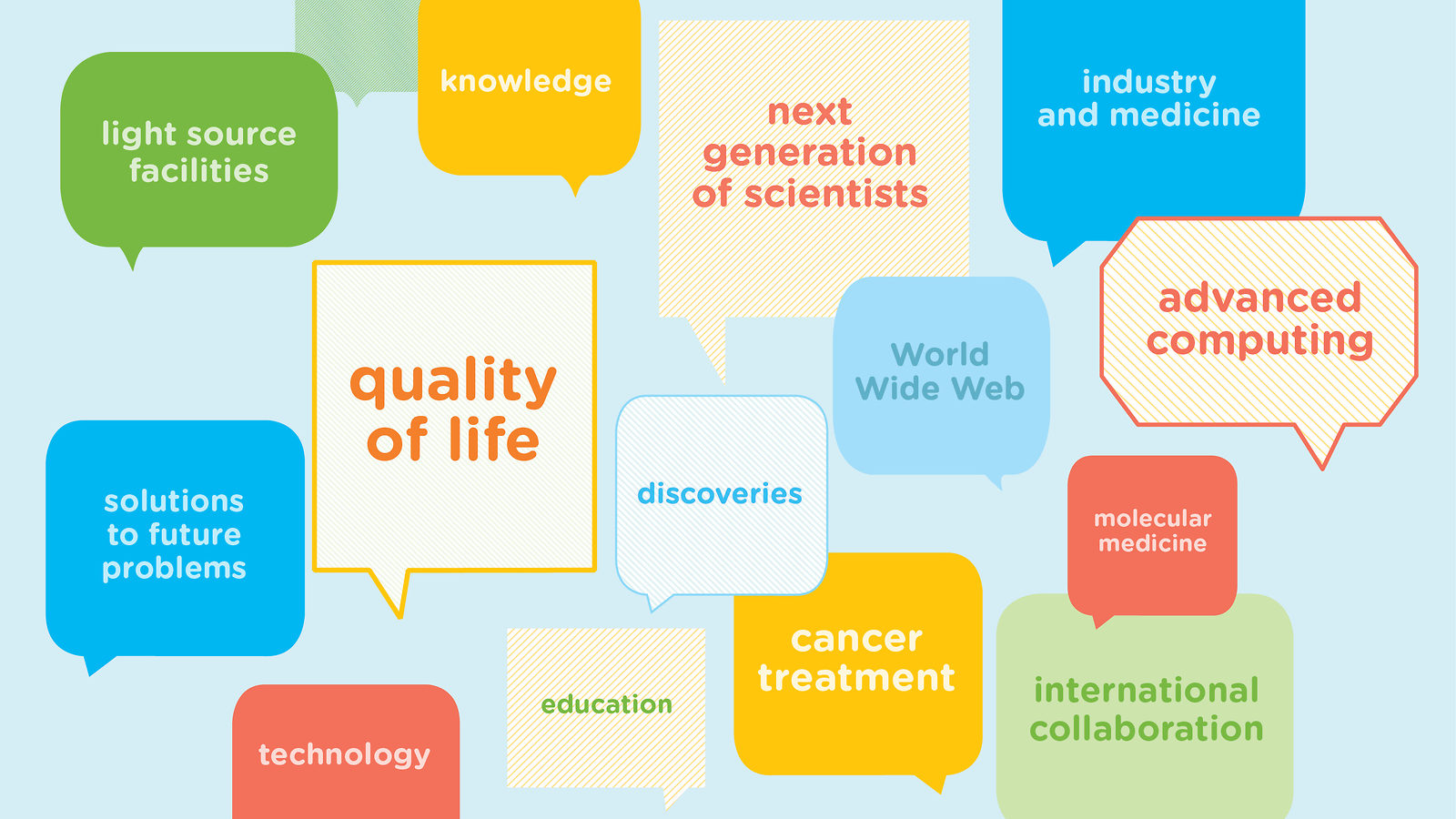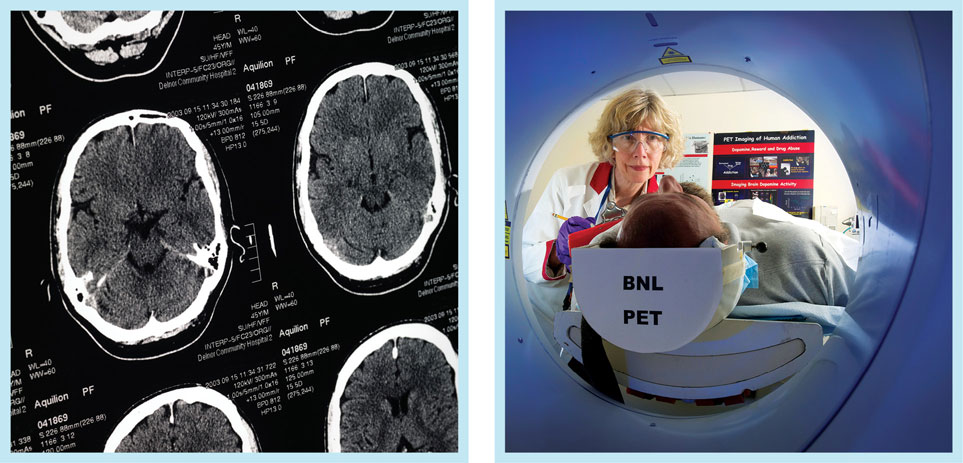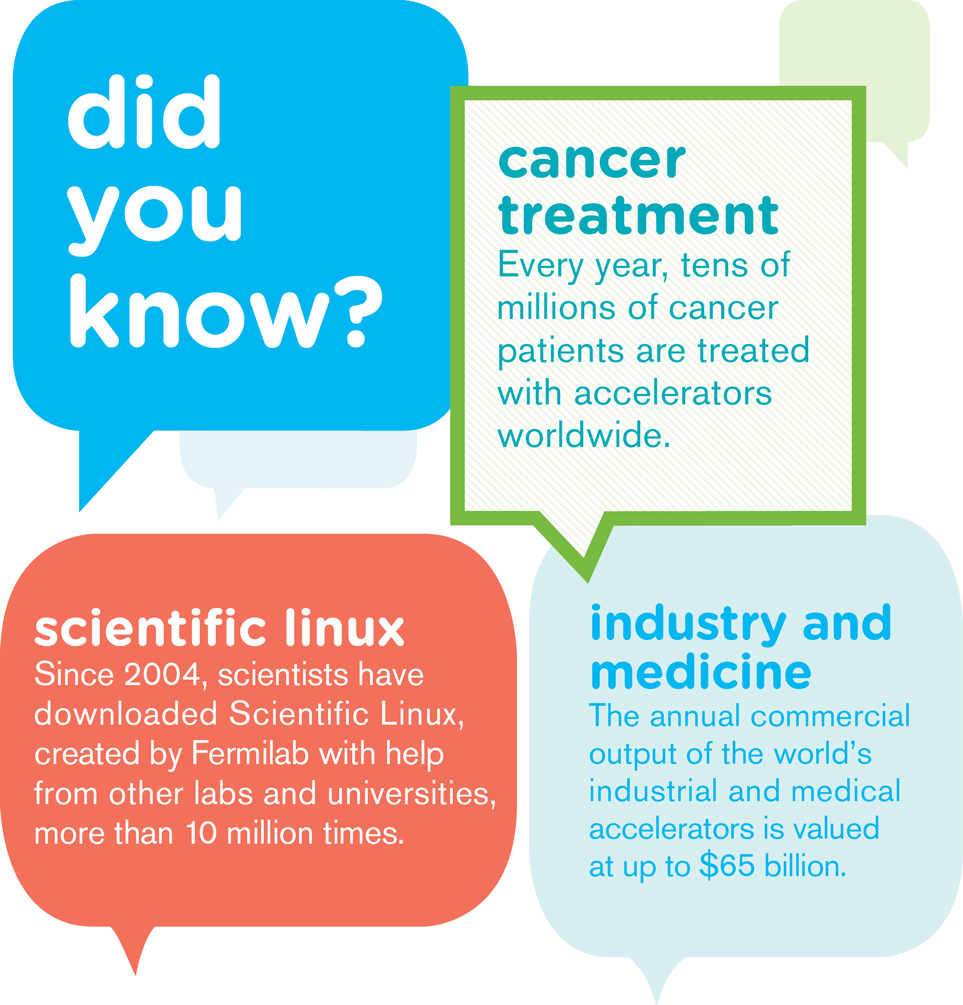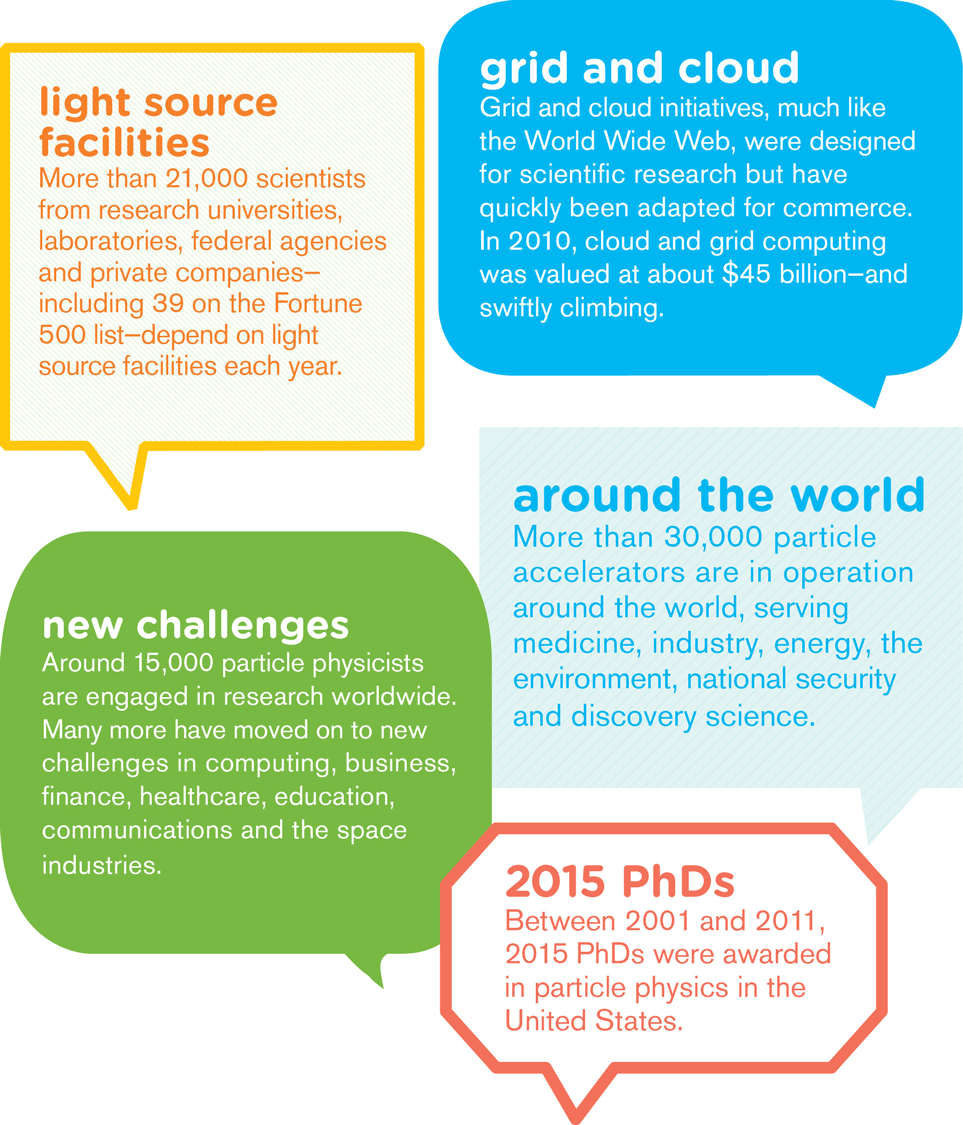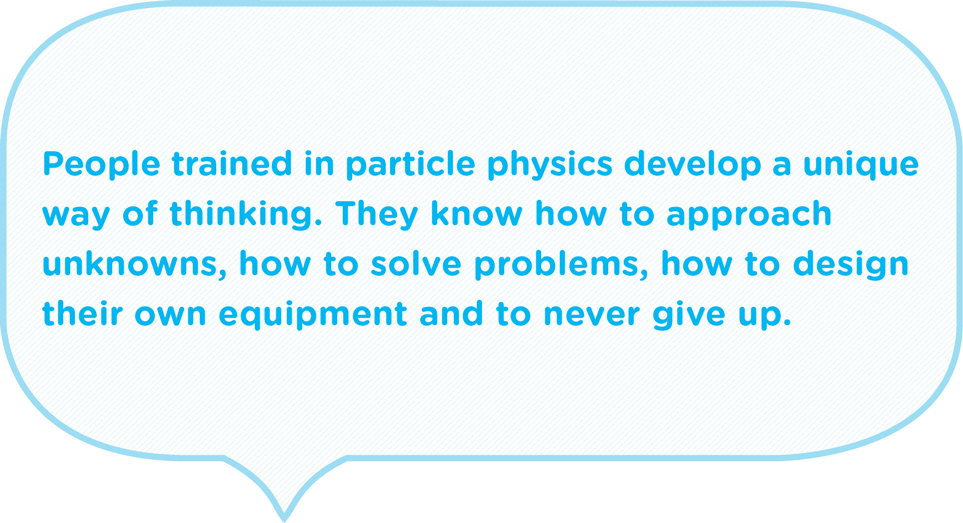As the lights came on and the camera started to roll, Heidi Schellman took a deep breath, collected her thoughts and began: “Hello, I’m Heidi Schellman and I’m a high-energy physicist working at Northwestern University. What effect does my research have on you?”
Particle physics research has brought about revolutions in our understanding of the world around us, she explained. But scientific exploration is more than just its own reward.
“When physicists start to measure new things, there is no catalog to order the equipment from. We make it ourselves,” she said.
“An analogy might be an expedition climbing Mount Everest. Is someone climbing Everest useful to you in everyday life? Not at first glance, no matter how interesting it is for its own sake. But fleece jackets and breathable waterproof fabrics were first developed for serious mountaineering expeditions and are now cheap and indispensable.
“That’s what’s great about humankind. We like a challenge…and the new tools we build for it have long-lasting value.”
Schellman’s explanation, recorded as part of the “Why particle physics matters” video project at the 2013 Snowmass Community Summer Study meeting in Minneapolis, expressed a few of the many reasons that particle physics is important.
The benefits of the field span everything from advancing humankind’s understanding of the universe around us, to applications in other fields of science as well as daily life, to training the next generation of scientists.
In so many ways, particle physics’ impacts go far beyond the laboratory and the textbook.
Applications in daily life
Today, the tools of particle physics—the complex accelerators, the sensitive detectors, the grid computing, the high-volume data storage and analysis—are making a significant and lasting impact on quality of life for people around the globe.
“Because particle physics asks big questions—the biggest in all of science, I’d say—we need new, unique and often very large equipment,” says Harry Weerts, a particle physicist at Argonne National Laboratory.
Many people interact with technology developed or improved by particle physics. Take, for example, Heather Brosnan, a first-year medical student at Oregon Health and Science University. Much of Brosnan’s class time is spent learning about the diagnostic tools available to physicians.
Over the decades, particle physics has developed the technologies needed to very accurately track particles as they collide and transform into hundreds of other particles. This same type of tracking is now essential for the computer tomography, MRIs and PET scans that allow a doctor to peer inside the human body to see what’s wrong.
Once a disease is diagnosed, Brosnan knows, it’s up to the doctor to determine how to best treat it. Prescription medications are often the first choice, and many medications are developed at particle accelerators called synchrotrons, which evolved out of particle physics research. These accelerator-based machines produce exceptionally intense beams of X-rays that can determine the precise structure of viruses and mutations that cause disease, and screen potential drug candidates to find the ones that will most likely work. Drugs developed in this way include Kaletra, one of the most-prescribed AIDS medications, and Tamiflu, an antiviral treatment that slows the spread of influenza.
Particle physics has also made possible and advanced other treatment options, including accelerator-based therapy. Each year, tens of millions of patients receive X-ray, proton and ion therapy to treat cancer at more than 10,000 hospitals and medical facilities around the world.
In an average day, nearly everyone uses products or technologies that stem from or were improved with particle physics.
There are the semiconductors within Brosnan’s laptop, which were made smaller and faster through accelerator-assisted manufacturing. There’s the touch-screen technology developed at CERN that has since been reinvented in many applications, including the iPad that Brosnan uses to type lecture notes. And then there’s the World Wide Web, originally developed as a way to more easily share particle physics results around the globe. Since its invention nearly two decades ago, the Web has grown to the point that it now stimulates nearly $2 trillion in annual commercial traffic.
“It’s not always obvious, but particle physics has bettered our lives, often in ways that we take for granted,” Brosnan says.
Applications in other fields
The applications don’t stop there. The knowledge and tools developed in particle physics are also enabling advancements in other areas of science, spurring developments in biology, chemistry, materials science and computer science.
One such tool is Scientific Linux, an operating system used to manage a computer’s resources and provide common services for computer programs. Its primary aim is to provide researchers with a computing platform that is stable, secure and easily customized.
Managed and distributed by Fermilab in collaboration with other labs and universities, Scientific Linux has been downloaded more than 10 million times, free of charge. Based on open source code provided by the company RedHat, Scientific Linux is used by researchers in laboratories and university groups around the world, including the one led by Akemi Matsuno-Yagi, a biologist at The Scripps Research Institute in California. Matsuno-Yagi depends on Scientific Linux for her research into one of the hottest areas of biology: molecular medicine.
“The research we do has nothing to do with particle physics,” she says. “We’re working to understand how energy is produced within our cells.” To do this, her group studies one of the most important enzymes, known as Complex I, that triggers the process by which cells breathe. When this process goes wrong, it can lead to a number of common yet untreatable diseases, including neurodegenerative diseases, blindness and sporadic Parkinson’s disease.
Matsuno-Yagi says running her equipment and databases on Scientific Linux makes her research more efficient and cost effective. If she were instead to use proprietary software, Matsuno-Yagi says, she would be required to upgrade to the newest version every year or two, which would involve rewriting her home-grown software each time—no insignificant undertaking. Because she uses the more stable Scientific Linux, she says her research progresses faster and more smoothly, which will eventually lead to sooner treatments for diseases caused by flaws in Complex I.
“Even though what we’re doing has little to do with particle physics, we are grateful to the field for making our work easier,” she says.
Scientific Linux is not the only particle physics tool assisting this line of research. Across the Atlantic, a team led by United Kingdom Medical Research Council researcher Leonid Sazanov has spent years determining the atomic and molecular structure of Complex I using synchrotrons, the same kind of particle physics tools that were used to develop Kaletra and Tamiflu.
By placing Complex I within the intense X-ray beam of a synchrotron, Sazanov and his colleagues were able to view its three-dimensional structure for the first time.
“This would not have been possible without synchrotrons,” he says. “Other X-ray sources are not focused or intense enough to resolve the structure.”
With the help of this three-dimensional view, Sazanov, like Matsuno-Yagi, now works to both better understand Complex I’s activity and develop effective therapies to cure diseases.
“Innovations come from fundamental physics research because we are driven to solve ‘impossible’ problems whose solutions are beyond the state of the art,” says Michael Peskin, a professor at SLAC National Accelerator Laboratory. “The passion to find these solutions comes from our drive to confront the most important problems in science, and these solutions eventually are also applied elsewhere.”
A way of thinking
People trained in particle physics develop a unique way of thinking. They know how to approach unknowns, how to solve problems, how to design their own equipment and to never give up. They’ve learned how to deal with huge data sets and work in huge collaborations with people from all over the world. And, with these skills, they go on to do great things in particle physics and beyond.
Take Jerome Friedman. Trained as a particle physicist at Berkeley Lab, Friedman went on to run the computation research group at SLAC and, eventually, to become a professor of statistics at Stanford University.
In this last role, Friedman has consulted for more than 25 companies including eBay, Yahoo, IBM and Ford, helping them mine data for useful information.
“If you have a huge database of information, you often want to train an algorithm to learn what connects various parts of the data so that, when new data comes in, you can make various predictions,” he says. “For example, if you have a database of medical symptoms and diagnoses, you try to predict the disease based on the symptoms.”
For decades, Friedman says, particle physics has been at the forefront of big data.
“Back in the 1970s, I wouldn’t have been able to do this type of work in a non-classified environment anywhere except particle physics,” he says. “We were always working on the biggest and the fastest.”
That experience, combined with an ability he learned in physics to think very analytically about problems, made a difference in his career, Friedman says.
He’s not alone. Other particle physicists have gone on to highly successful careers at Google, Nielsen, NASA, Shell and a host of other companies. Skills learned in particle physics—including computer programming, data analysis, statistical analysis, communication across areas of expertise and across continents, technical writing and management—have made them assets in their new fields.
“The skills learned in particle physics train people especially well to be problem solvers,” says Michelangelo D’Agostino, a former particle physicist who now works at the credit-card-payment-processing company Braintree.
“In a world that’s constantly changing, being able to solve tough quantitative problems and never assuming anything is impossible really sets particle physicists apart.”
Discovery science
Of course, the main goal of particle physics is to learn about the universe around us. Over the past half century, particle physicists have formulated the Standard Model, a beautiful framework that explains the visible universe from the smallest to the largest scales. With its fundamental particles and the forces that act between them, this model successfully describes nearly all of the visible matter that particle physicists have seen in their experiments so far—an enormous accomplishment.
But there is much more to discover. As University of California, Berkeley, theorist Hitoshi Murayama puts it, “the universe is a deeper puzzle than the Standard Model.”
Dark matter and dark energy make up a whopping 95 percent of the universe, yet scientists are still trying to figure out their origins and what they are made of.
Particle physicists have been chipping away at this darkness, with numerous tools and experiments, both big and small. Others in the community explore the secrets of the neutrino, an exceedingly tiny, prevalent particle that’s thought to have played an essential role in the evolution of the universe. Others dig in to study the Higgs field, which presumably gives elementary particles their mass, or to search for undiscovered principles of nature. Still others seek evidence of extra dimensions of space, a finding that would change our understanding of both the birth and the evolution of the universe.
And that’s only the tip of the iceberg.
Through these and other lines of inquiry, particle physicists are learning how the most basic building blocks of nature work and interact. That not only allows us to understand the how and the why of the universe around us, but it also frees us to control those building blocks and develop new materials, new applications and new industries.
“This is a special time to be a physicist,” says Christopher Hill, a physics professor at The Ohio State University. “There are very good reasons to expect discovery—or discoveries—with future research.”
More to come
Particle physicists ask the biggest scientific questions imaginable and then devise ways to answer those questions. And if the tools needed to answer those questions don’t yet exist, well, particle physicists develop what’s needed.
That tenacity—and the knowledge and tools that stem from it—has revealed how the universe works, made substantial impacts on other fields of science, improved daily life for people around the world, and trained a new generation of scientists and computing professionals.
Future projects will require new knowledge and new technological solutions, solving problems we can’t yet envision. Back at the Snowmass on the Mississippi meeting, Fermilab physicist Herman White, who also recorded a video for the “Why particle physics matters” project, drove this point home.
“Discoveries in particle physics make up much of the fundamental base of knowledge necessary to operate many systems in our complex world,” he said. “It provides us with the capacity to solve problems we don’t even know we have yet.”



